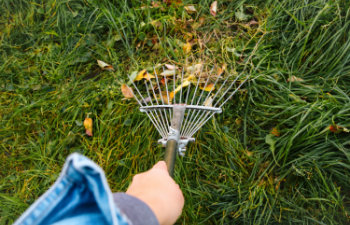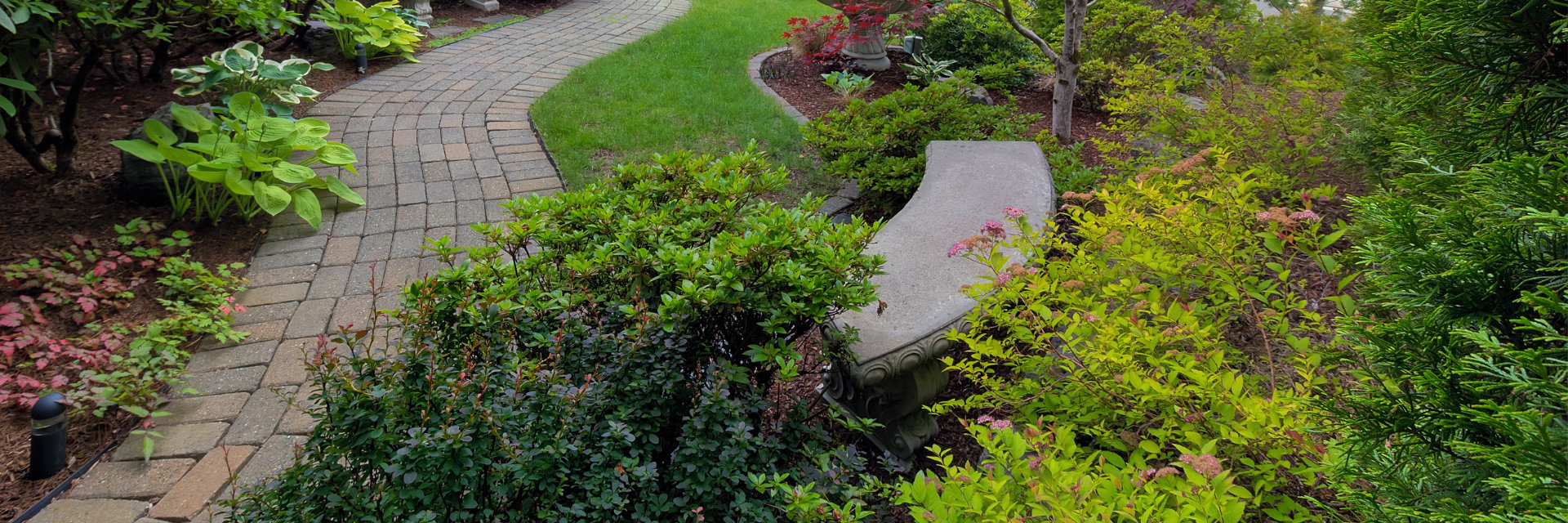
As the vibrant days of summer slowly surrender to the cooler, damper season of fall, it’s essential to shift our focus towards preparing our landscapes for the winter months ahead. Here at Lanier Yardscapes in Peachtree City, GA, we believe that proper seasonal preparation not only ensures that your landscaping flourishes throughout the colder months but also sets the stage for a beautiful spring revival.
Here are eight valuable tips to prepare your landscaping for fall.
1. Aerate Your Lawn
Fall is the perfect time to aerate your lawn. Aeration involves perforating the soil with holes to allow air, water, and nutrients to penetrate the grass roots. This helps alleviate soil compaction, promotes deeper root growth and enhances the overall health of the lawn. If your lawn is struggling from foot traffic or thick thatch, consider aerating it before winter.
2. Fertilize
Applying a high-quality fall fertilizer can help your lawn withstand harsh winter conditions. Fertilizers with a higher potassium content are ideal for enhancing root strength and cold tolerance. The nutrients prepare your lawn for winter dormancy, ensuring it can green up quickly in spring.
3. Seed Your Lawn
If your lawn has bare patches or has suffered from any summer hardships, now is the time to overseed. Choose a suitable grass seed for the cooler fall temperatures. When the soil is warm but the air is cool, seeds will germinate quickly, resulting in a denser and greener lawn come spring.
4. Mulch Around Plants
Adding a layer of mulch around your plants not only helps conserve moisture but also serves as insulation against the chilly weather. Organic mulches, such as shredded leaves or bark, can break down over time, enriching the soil as they decompose. Be sure to keep mulch away from plant stems to prevent rot.
5. Prune Trees and Shrubs
Fall offers a great opportunity to prune trees and shrubs as they begin to go dormant. By trimming away dead or diseased branches, you reduce the risk of winter damage. Proper pruning also encourages healthier and more vigorous growth in the spring.
6. Clean Up Your Garden
Clear away any fallen leaves, dead plants and debris that have accumulated in your yard. This not only promotes aesthetics but also prevents pests and diseases from overwintering in your garden beds. Clean gardens also make the winter melt easier, ensuring sufficient moisture reaches plant roots.
7. Protect Tender Plants
If you have sensitive plants in your landscape, consider protecting them during the colder months. This might involve burlapping, mulching or even bringing container plants indoors. Research specific plant species to determine the best protection strategies during winter.
8. Check Your Irrigation System
Before winter settles in, inspect your irrigation system. In areas where freezing temperatures are a concern, it’s essential to blow out lines to prevent water from freezing and damaging pipes. Adjust your watering schedule to match the changes in climate, reducing watering frequency as the weather cools.
Landscape Care FAQs
To help you navigate seasonal changes and ensure a thriving landscape, we’ve compiled a list of five common landscape care questions:
When should I apply fall fertilizer?
Fall fertilizer should usually be applied in late summer to early fall, ideally around mid-September to mid-November, depending on your local climate conditions.
How often should I water my lawn in the fall?
Watering frequency varies with weather conditions, but generally, you should aim for about 1 inch of water per week. Adjust your watering schedule based on rainfall and temperature to ensure your lawn remains hydrated without becoming soggy.
Is it necessary to rake leaves in my yard?
Yes, raking leaves is important as leaving them on the grass can suffocate it and promote fungal diseases. However, you can also mulch leaves into smaller pieces to provide nutrients back to the soil if they’re not too numerous.
What types of mulch are best for my landscape?
Organic mulches such as hardwood mulch, shredded leaves and pine straw are excellent choices. They not only help retain moisture and suppress weeds but also improve soil quality as they break down over time.
Should I still mow my lawn in the fall?
Yes, continue to mow your lawn until the grass stops growing. Keep the grass height around 2.5 to 3 inches to ensure it remains healthy during winter and prevents winter damage.
Peachtree City Lawn Care
As fall settles in, taking the right steps to prepare your landscaping is vital not just for winter survival but also for establishing a robust foundation for spring growth. Following these simple tips will help ensure your yard transitions smoothly into the next season.
For personalized advice and professional care, don’t hesitate to reach out to us at Lanier Yardscapes. We’re here to help your landscaping thrive year-round!
Posted on behalf of
115 Shamrock Industrial Blvd Suite B
Tyrone, GA 30290
Phone: (770) 337-5174
Mon. - Fri. 8:30 AM – 7:00 PM

